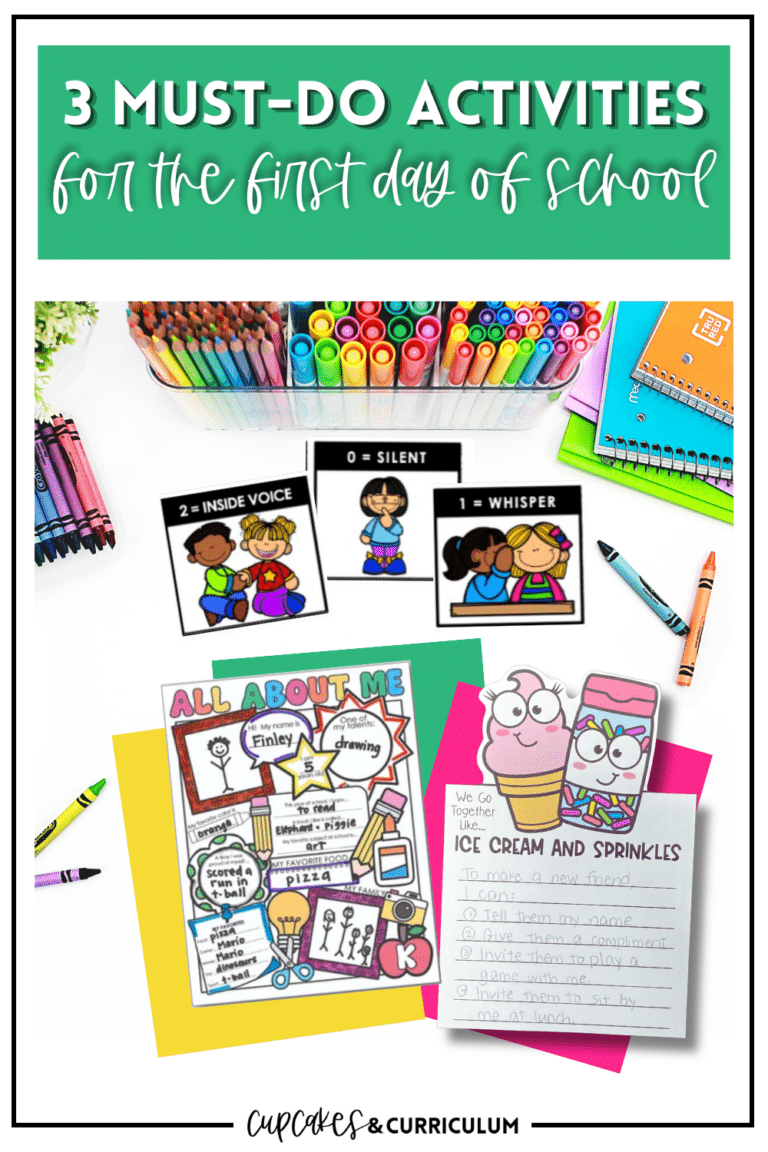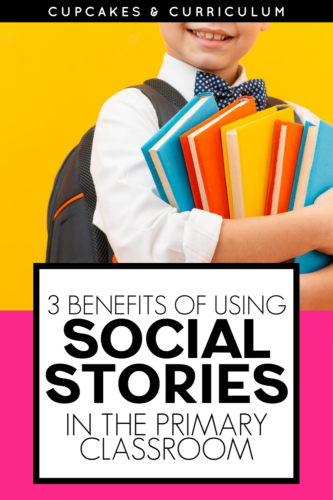
Our students will have a lot of social-emotional needs in the new school year and beyond. All students, but especially K-3 learners, can benefit from seeing adults model positive behaviors and exploring their own emotions. Using social stories is one way to help students understand their own feelings and how to deal with them in and outside of the classroom. Here are some benefits of social stories in the primary classroom.

First, social stories are narratives that focus on individuals undergoing challenges or dealing with everyday emotions. These stories help your students put themselves in the character’s shoes. Next, social stories also include images to help your primary students “see” the story that you read. Although social stories are often used with students with autism and other special needs, these short narratives work to help all young children deal with their emotions!
Young students often struggle with understanding why they feel a certain way. It can also be difficult to name their feelings. For example, your students may feel anxious about coming back to school. These emotions may be because of social distancing, masks, the extended break, or the being away from home.
Using back to school social stories to describe situations where students may feel anxious helps your learners understand that it’s OK to feel nervous and scared. Social stories validate your students’ emotions and feelings.
Next, social stories allow students to see how to respond to certain situations in and outside of the classroom. For example, these COVID-19 back to school social stories help students learn how to properly wear a mask with a sort/cut and paste mask activity. In addition, students can also learn how to properly socially distance. This is a hard concept for many students but it will be very difficult for children who haven’t seen each other in months!
When navigating emotions, it’s important to teach our students that there are things they can control and things that are beyond their control. Focusing on the things they can control helps your students manage their emotions. On the other hand, there are some things that students cannot control. It’s OK to share some of these things with your students. For example, tell your students that they cannot control how another student acts or feels. If a student refuses to do their part in a group assignment, for example, only they can control their behavior. Share this with your students before classmate behavior escalates. They’ll learn that their job is to tell a teacher if they feel someone is being unsafe or needs help. Keep reminding your students that only they can control their own behavior (not others) through social stories and activities like the “What Can We Control?” worksheet. Using social stories in the primary classroom helps students not only understand what they are feeling but why feeling that way is OK. In addition, social stories give students a chance to practice appropriate behavior and understand what situations are beyond their control. There are so many benefits to using social stories in the primary classroom! How will you use them with your students?